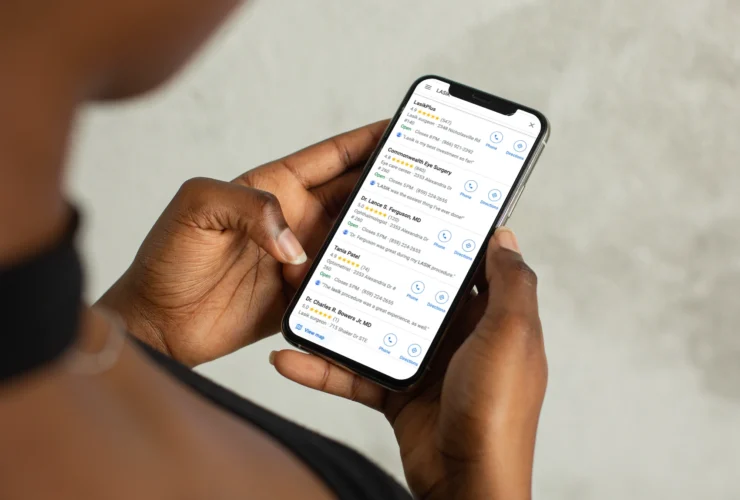The Unseen Risk Hiding in Your Website
When it comes to our marketing, our websites are often treated like cars: change the oil every 3 months, but unless something breaks or a problems arises, they usually require fairly little maintenance, right?
Wrong.
The Internet moves a little faster than the automotive industry. While a vehicle from 2007 will still drive perfectly well today, a website that hasn’t been updated since then will almost certainly drive people away. It’s not an asset at that point.
There is a certain point when a website that should be an asset becomes a liability. This can come in many different forms, including poorly-maintained websites, sparsely-updated websites, or websites that deliver errors from a lack of proper maintenance.
But there’s one particular error that often goes unnoticed when it comes to websites today – and if your website hasn’t seen a massive overhaul in the past few years, there’s a good possibility that it affects you.
What is it, you ask? A little thing called responsive design.
Put simply, a mobile-responsive website is vital in today’s ophthalmology market.
What’s responsive, you ask? While it’s a little old, this video explains it best:
Put simply, websites that utilize responsive design respond to the screen size of the device they’re being viewed on. This means that you don’t have to make different websites for different devices (ever seen those “Visit Full Site” buttons on your iPhone? Yeah…no more of those).
If you don’t utilize responsive design, it can cause frustration among visitors who have to drag, pinch, scroll, or zoom your web pages to find what they are looking for. This can cause many of them to leave your site quickly and go elsewhere.
Put simply, a mobile-responsive website is vital in today’s ophthalmology market.
Responsive design burst on to the scene in 2009 when designer Ethan Marcotte coined the term and the technology was finally ready to detect the size of the screen a website was being viewed upon. Chances are that if you haven’t seen a major overhaul of your website’s design since 2009, it’s not responsive, and you could be missing out on lots of potential customers.
How can I tell if my website is responsive or not?
In order to help you discern whether your website is responsive or not, we’ve assembled a little checklist:
- Do you have a “mobile” and a “full” or “desktop” version of your website?
- If you answered yes, your website is not responsive.
- Do elements of your website rearrange as you view it?
- If you answered yes to this question, your website is responsive.
- Does your navigation change format at all (i.e. change to a dropdown menu or a side menu) when you view it on a mobile phone or tablet?
- If you answered yes, your website is responsive.
- Do you have Flash elements anywhere on your website?
- If you answered yes, your website may be responsive, but mobile users may still experience frustration, as Flash content cannot display on mobile devices.
Still not sure? Use Google’s Mobile-Friendly Test to see whether your website is up to par.
Ok, so my site isn’t responsive. What can I do about it?
If your website is not responsive, you have a few options at your disposal. Each will be an investment, but trust us when we say that an investment in responsive web design is well worth it!
Option One: Hire a developer to add media queries to your website
Media queries are those little bits of code that detect the screen size of the device a website is being viewed upon and tell a browser to display elements a certain way depending on its size. For instance, if a user is viewing your site on an iPhone, photos that were next to each other on a desktop computer may stack on top of each other; if you’re using an iPad, they may still display the same as they do on a desktop.

Developers can fairly easily add media queries to your website, but it takes time and effort to ensure that every element display properly across a variety of devices. When adding media queries on an already-existing website, it is often easy for certain elements to slip through the cracks in the thousands of lines of code, so there’s always…
Option Two: Redesign your entire website from the ground up
In terms of holistic changes designed to deliver the best experience possible, option number two is the better of the two, namely because it is a fresh start. While a developer can certainly add media queries to an existing website, it’s all too easy (and common) for elements to go unnoticed because they aren’t used very frequently. While these are minor changes to be made down the road, it means that errors and problems pop up from time to time, requiring the developer to go back in and make changes to the website (all of which costs you more time and money, which is a bad thing).
Rather than composing an ad-hoc solution, it’s better to start fresh on a new design. A new design not only gives you an opportunity for a new design and a visual refresh (which can attract new users to your website), but it also can give developers a chance to go in and correct redundancies and fragmented code that has piled up over the years, factors that can lead to a faster, more reliable website, and ultimately a better experience for your users.
I’m not convinced…

Not only is responsive design a best practice for user experience, but it’s also a no-brainer for good business as well. In fact, due to the rise in mobile traffic in recent years, Google updated their search engine algorithm to reward those websites that were “mobile-friendly.” Not having a responsive website can actually hurt your placement on top search engines like Google, and cause lower traffic to your website.
Let’s face it: responsive design is here to stay, and a mobile-friendly website is vital in today’s eye care market. If you want to reach the most patients and provide the best experience from start to finish, your website needs to be responsive.
Want the Inside Scoop?
It’s clear that responsive design matters: a client of ours recently saw a 743% increase in traffic after switching their website over to a responsive design.







